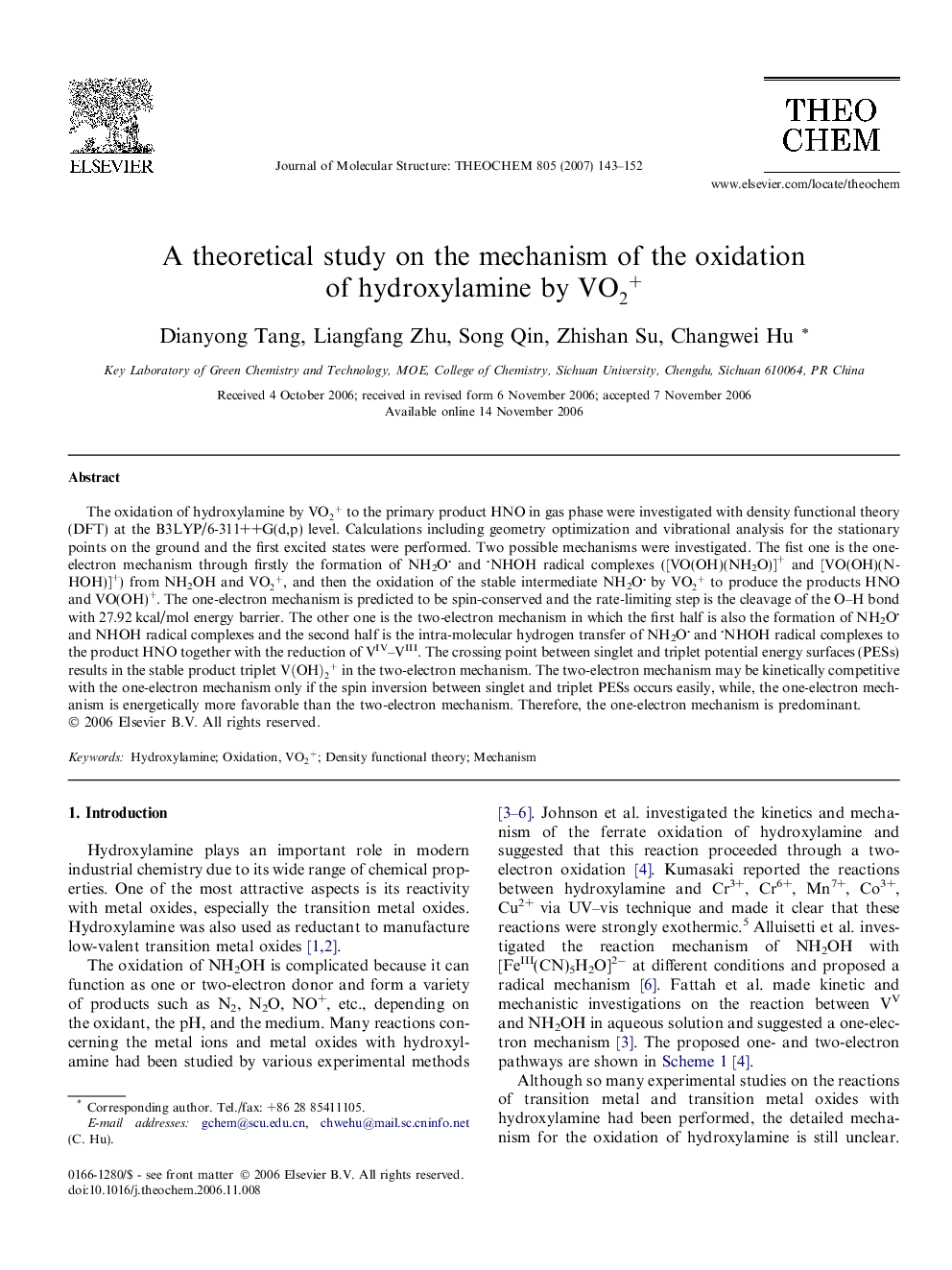| Article ID | Journal | Published Year | Pages | File Type |
|---|---|---|---|---|
| 5418833 | Journal of Molecular Structure: THEOCHEM | 2007 | 10 Pages |
Abstract
The oxidation of hydroxylamine by VO2+ to the primary product HNO in gas phase were investigated with density functional theory (DFT) at the B3LYP/6-311++G(d,p) level. Calculations including geometry optimization and vibrational analysis for the stationary points on the ground and the first excited states were performed. Two possible mechanisms were investigated. The fist one is the one-electron mechanism through firstly the formation of NH2O and NHOH radical complexes ([VO(OH)(NH2O)]+ and [VO(OH)(NHOH)]+) from NH2OH and VO2+, and then the oxidation of the stable intermediate NH2O by VO2+ to produce the products HNO and VO(OH)+. The one-electron mechanism is predicted to be spin-conserved and the rate-limiting step is the cleavage of the O-H bond with 27.92Â kcal/mol energy barrier. The other one is the two-electron mechanism in which the first half is also the formation of NH2O and NHOH radical complexes and the second half is the intra-molecular hydrogen transfer of NH2O and NHOH radical complexes to the product HNO together with the reduction of VIV-VIII. The crossing point between singlet and triplet potential energy surfaces (PESs) results in the stable product triplet V(OH)2+ in the two-electron mechanism. The two-electron mechanism may be kinetically competitive with the one-electron mechanism only if the spin inversion between singlet and triplet PESs occurs easily, while, the one-electron mechanism is energetically more favorable than the two-electron mechanism. Therefore, the one-electron mechanism is predominant.
Related Topics
Physical Sciences and Engineering
Chemistry
Physical and Theoretical Chemistry
Authors
Dianyong Tang, Liangfang Zhu, Song Qin, Zhishan Su, Changwei Hu,
